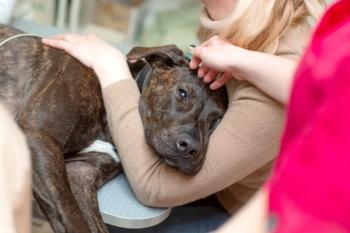
Influenza D in Small Ruminants and Other Species
In the past few years, influenza D virus has been identified in cattle in the United States, France, and China. “Its intercontinental transmission and prevalence in both cattle and swine highlight its potential threat to other agricultural animals and humans,” write study authors.
Sheep and goats are susceptible to infection with influenza D virus, according to a
Influenza virus types A, B, and C can all infect humans. Most influenza A subtypes are found in waterfowl, although some, such as H1N1 and H3N2, cause significant illness and seasonal influenza epidemics in people. Influenza B, which is found only in humans, also causes influenza epidemics and clinical illness. Influenza C typically results in only mild symptoms in people. Infection with influenza D has not been found in humans.
Influenza D virus is a recently identified genus within the Orthomyxoviridae family. The virus was first seen in swine, and cattle are thought to be a reservoir species. It can also infect guinea pigs and ferrets (ferrets are used as research models for human influenza virus infection).
In the past few years, influenza D virus has been identified in cattle in the United States, France, and China. “Its intercontinental transmission and prevalence in both cattle and swine highlight its potential threat to other agricultural animals and humans,” write the study authors.
The authors investigated the prevalence of antibodies to influenza D by serological analysis of samples from sheep, goats, turkeys, and chickens. Most serum samples were collected from animals in the midwestern United States.
Serum samples collected from sheep (29/557, 5.2%) and goats (8/91, 8.8%) were positive for antibodies to influenza D virus. No serum samples from turkeys or chickens were positive for influenza D antibodies. Birds are reservoirs of influenza A, but these results indicate that poultry in the sample population had not been exposed to influenza D. The authors note the possibility that turkeys and chickens are not susceptible to influenza D virus infection.
The authors suggest future surveillance for influenza D virus in small ruminants. They also recommend testing animals (including poultry) with a wider geographical distribution to further investigate the origin and reservoir species for this virus. In
Dr. Laurie Anne Walden received her doctorate in veterinary medicine from North Carolina State University in 1994. After an internship at Auburn University College of Veterinary Medicine, she returned to North Carolina, where she has been in companion animal general practice for over 20 years. Dr. Walden is also a board-certified Editor in the Life Sciences and owner of Walden Medical Writing.
Newsletter
From exam room tips to practice management insights, get trusted veterinary news delivered straight to your inbox—subscribe to dvm360.




